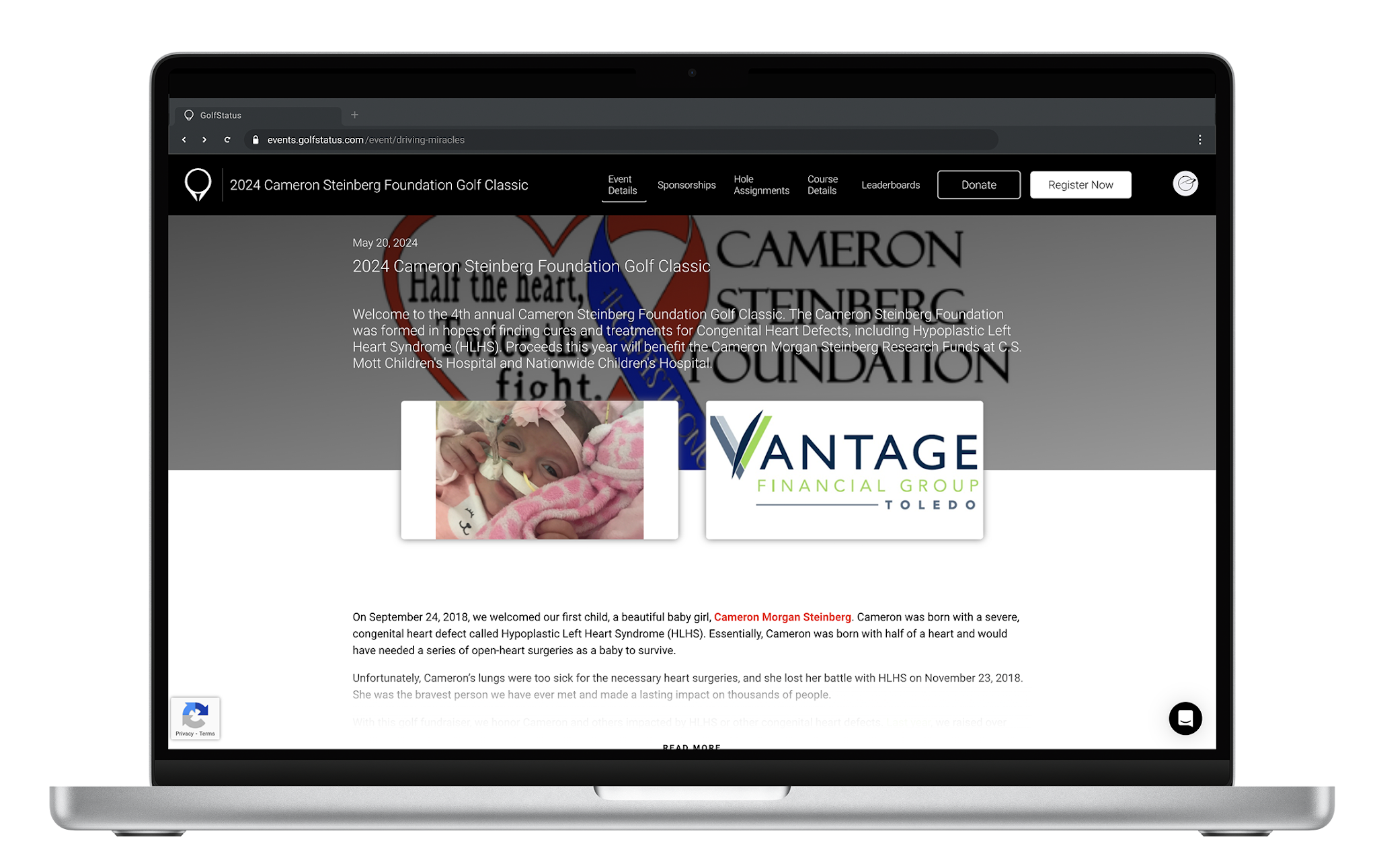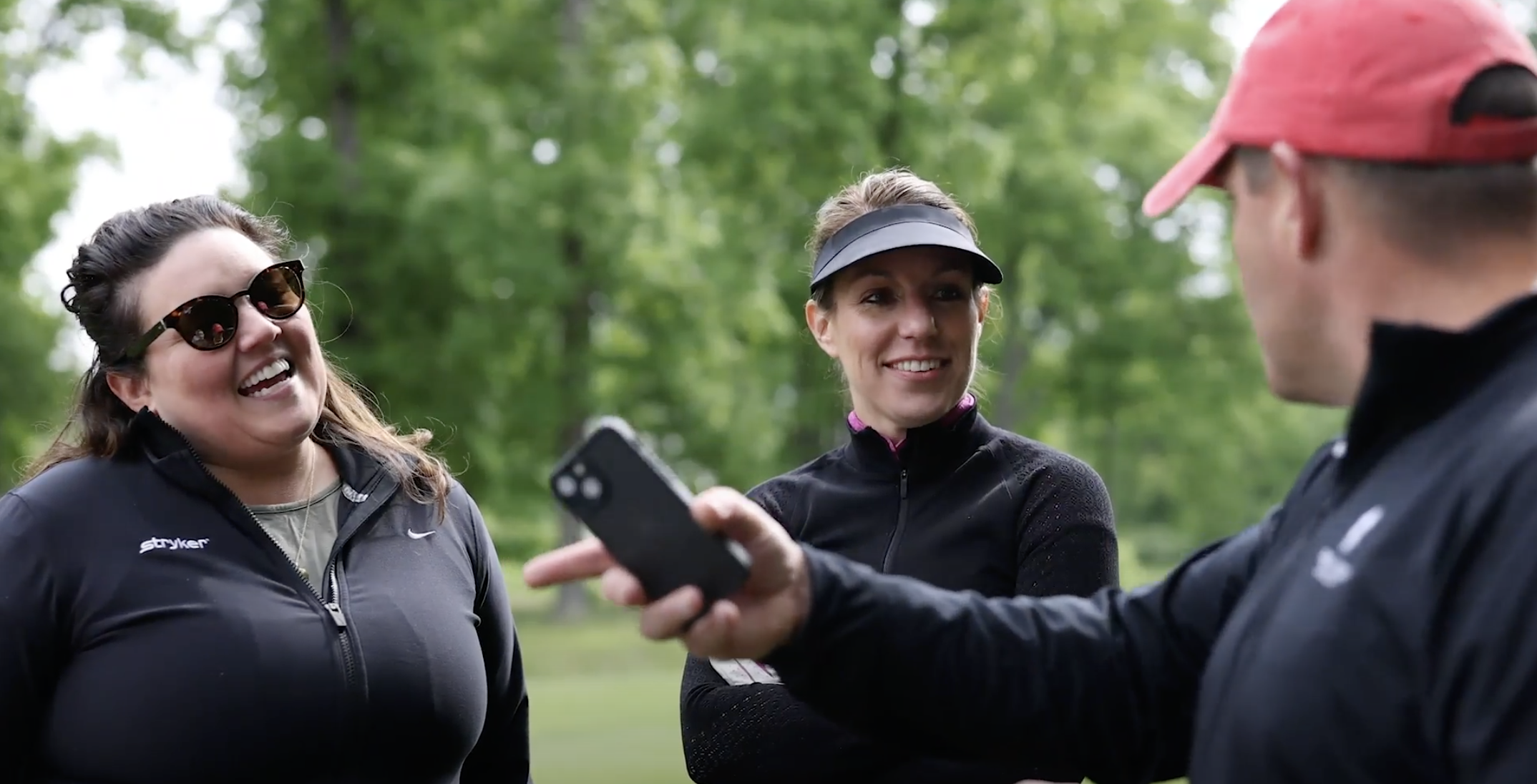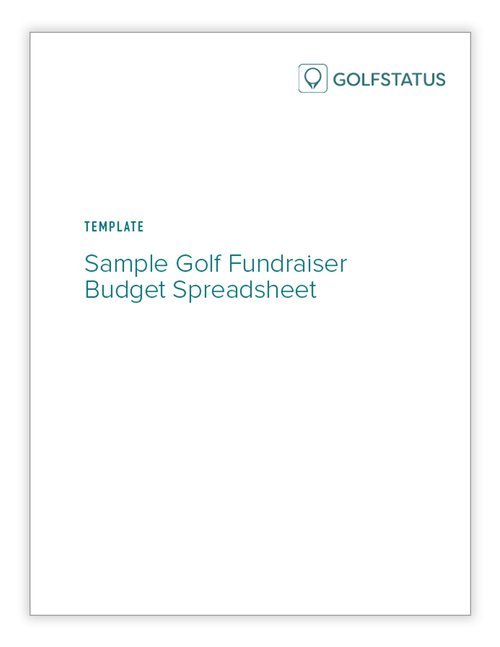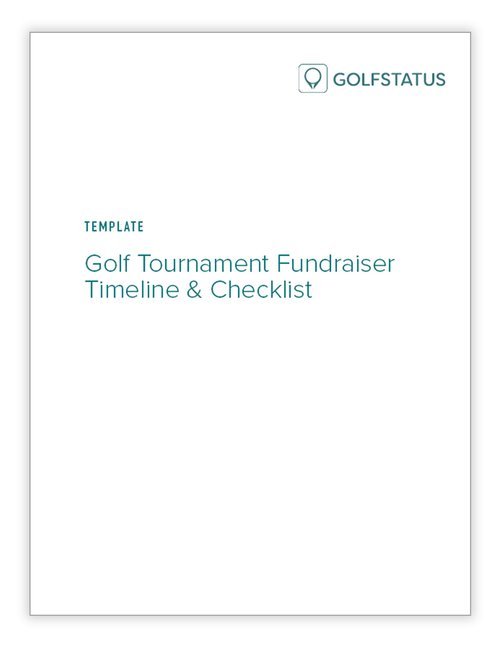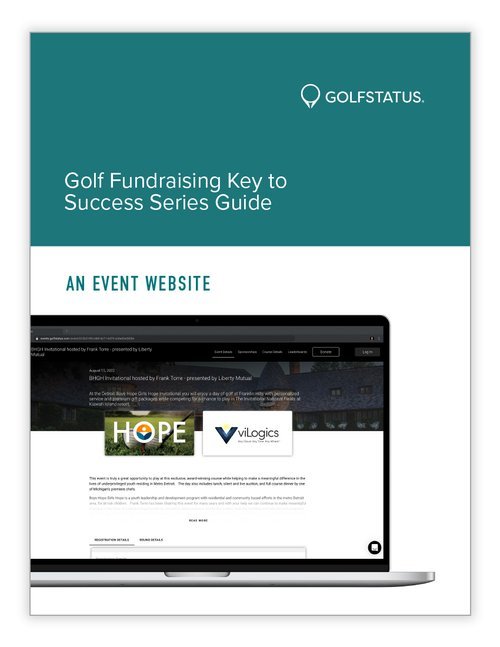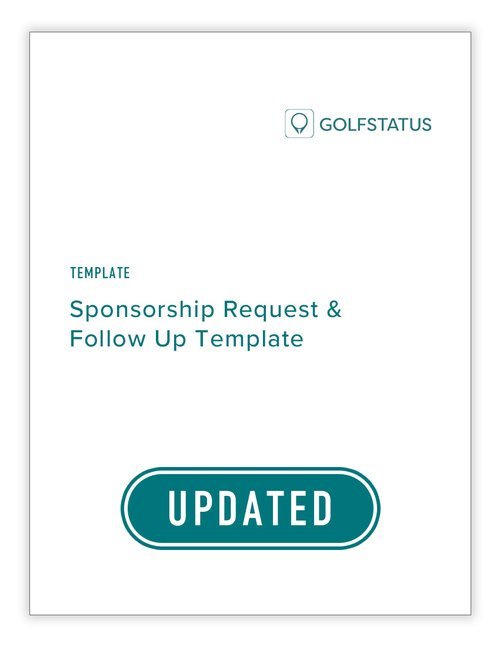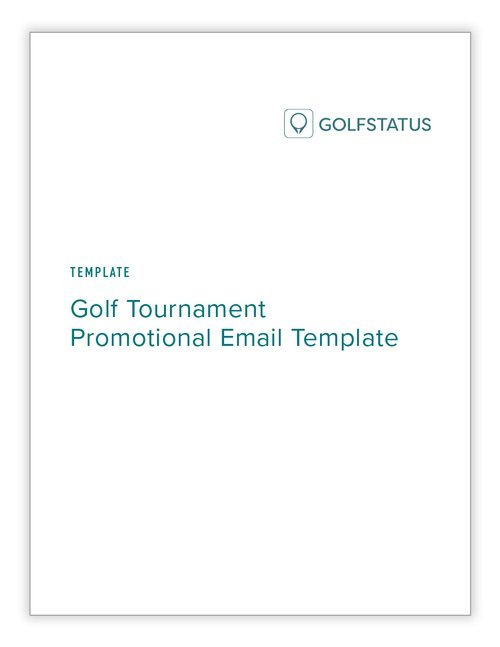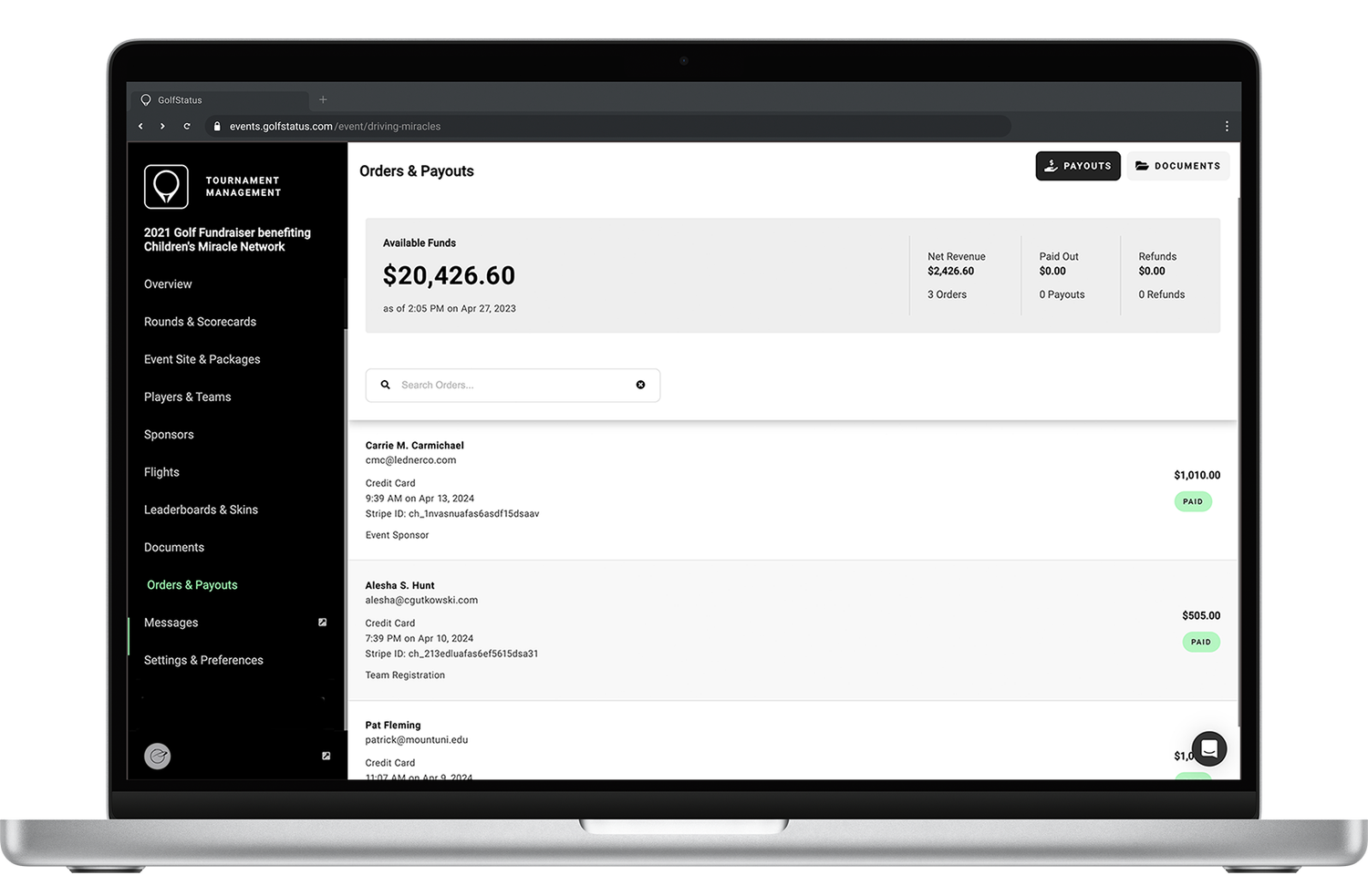If you’re looking for a fresh idea to engage employees, clients, and the community at large while raising awareness about your brand in a unique and meaningful way, a corporate golf event is the perfect answer. Corporate golf outings—especially when they’re well-managed and organized—offer a variety of positive outcomes for a company.
What Are Corporate Golf Events?
A corporate golf event is a tournament or outing planned and hosted by a business. Corporate events often raise money for a corporate foundation or favorite nonprofit, but don’t have to include a charitable component. Such events are used as an opportunity for team-building across departments, to entertain clients or prospects, or as a give-back initiative.
For example, a credit union is looking for a new way to support the children’s hospital in its community. The credit union organizes a corporate golf event targeted at credit union employees, partners, and vendors, and hospital personnel. The event connects people across organizations while raising money for the hospital.
What Are the Benefits of Corporate Golf Events?
Enhance Corporate Social Responsibility
Corporate social responsibility (CSR) is becoming increasingly important to employees, partners, and clients who want to work and spend their dollars with businesses that prioritize community impact. Consider these CSR statistics:
93% of employees think companies should lead with purpose
77% of consumers want to purchase from socially-responsible companies
94% of major US corporations plan to increase or maintain their corporate giving over the next few years
CSR initiatives should be strategic, genuine, and multifaceted. A corporate golf outing that benefits a charity or cause is a great addition to your company’s CSR portfolio, providing not only a philanthropic opportunity, but the brand lift and awareness that comes from a fun community fundraiser.
As a business, this could mean connecting with an existing golf event to support it as a sponsor. Or, if you choose to take it a step further by hosting your own corporate event, you can be strategic in choosing nonprofit beneficiaries while also reaping a reputational boost.
Connect With Your Community
Golf events are unique in that they can be designed as communal activities. If community engagement and outreach are among your goals for the outing, you’ll want to ask and answer a few questions as you get started:
Who would we like to attend the outing?
What’s our goal for turnout?
What do we want our attendees to take away from this event?
Does it make sense to open the tournament up to the broader community?
You may invite specific community members to participate, such as the mayor, community outreach group leaders, school administrators, or other stakeholders. Or invite staff or beneficiaries from the charity the outing will raise money for. Either way, be thoughtful about how the event might be a win-win for your business and the community.
No matter the audience you choose or the objective at hand for your business, having an easy way to register and track interested participants and sponsorships is crucial. Online registration with secure payment processing as part of a broader golf event management platform makes it easy to collect participant information, manage it in real time, and facilitate communications before, during, and after the event.
Provide a Competitive Edge
Creating positive social impact has increasingly become a competitive advantage for businesses. As a community event that tends to attract attention in addition to raising dollars, a corporate golf event that’s dedicated to supporting a cause helps set your brand apart from your competitors and attract socially responsible customers.
An event website makes it simple to spread the word about your event while also getting more support from the community. A professional event site also elevates your brand, cause, and case for support. A website provider like GolfStatus, that’s powered by a golf-specific software platform, lets you manage players, teams, and hole assignments with just a few clicks.
Build & Foster Relationships
Golf outings are unique in that they give participants four or five focused hours on the golf course—a rarity in today’s busy world. That means several hours of facetime with colleagues, vendors, clients, prospects, or others to network and advance important business relationships. This also means that your business development team gets quality time to engage with current and prospective clients and partners to thank them for their continued involvement or advance a new relationship.
If fostering business relationships is among your goals for the event, you’ll want to ensure a smooth and seamless experience for participants from the time they hear about your event to the thank you they receive for supporting it. Every touchpoint should be seamless and professional, including online registration, clear communication in the time leading up to the event, high quality branded cart signs and scorecards, and TOUR-caliber live leaderboards.
Boost Employee Engagement
In today’s competitive job market, businesses need to find ways to attract and retain top talent, which means demonstrating that business priorities include more than just the bottom line. Studies show that team bonding events can boost employee retention and performance at work. A golf outing can be used to engage employees, reward them for a job well done, build morale, and encourage team retention. Best of all, holding a charity event satisfies the 71% of employees who think it’s important to work at a company that gives back.
Allow Your Company to Do Good In Your Community
Golf has deep ties to the nonprofit sector, evidenced by the $4.6 billion that the sport raises for charity annually. It’s a game that brings people together in a memorable way to raise funds for a good cause. Golf’s popularity continues to grow, making it a great time to use it to give back—to your employees, your community, and an important cause.
For instance, in the example mentioned above, a credit union hosted a golf tournament that raised money for the local children’s hospital. Organizers sold sponsorships to the credit union’s partners, vendors, and industry associations who share an interest in advancing children’s healthcare. Golfers represented sponsors, employees from the host credit union and competing credit unions, members of the city council, and hospital staff. Hospital patients and administrators attended the event and helped run on-course games that allowed participants to connect with the “why” behind the event. The event raised $50,000 which provided financial assistance to patients and their families and built strong connections within the community.
How to Host a Corporate Golf Event
If you’ve never planned a golf tournament before or don’t know much about the sport, don’t worry—you can still hold a professional, memorable event that engages employees and the community. Here’s how:
1. Use the Right Tools
It’s likely that planning a company golf outing isn’t your full-time job, or even something you do on a regular basis, so you might not know where to start or how to maximize efficiencies that save your precious time. Most event management systems aren’t able to intuitively manage the intricacies of a golf outing (hole assignments, player pairings, scoring and leaderboards, flighting, handicaps, etc.) so look for one that’s built specifically for golf tournaments and includes:
Online registration is non-negotiable when planning a corporate golf event. It gives the event and your brand a professional feel and is a time-saver for tournament planners.
Online Registration. This is a must-have—golfers seamlessly submit their information and payment online, saving hours of dealing with spreadsheets, checks, and receipts.
Customizable Event Website. The site should present your event in a professional light and make it simple to promote the event, provide digital sponsor exposure, and share detailed information about the event.
Shared Access. All registration information should populate into the platform’s back end, which means all the event’s information is stored and accessible in one place by organizers and even staff at the golf facility.
Communication Tools. Need an easy way to quickly communicate with all registrants? Your platform should have built-in communication tools like emails and push notifications.
Pre-formatted Printouts. Want to print branded scorecards and cart signs? Use a platform that comes with pre-formatted, professional printouts.
Live-scoring & Leaderboards. Golfers submit their scores with an easy-to-use, reliable live-scoring app that syncs to live leaderboards. Live leaderboards give the tournament an even more professional look and feel and allow teams to track current standings.
Ready to start planning?
2. Set Goals & Outline the Specifics
Once you have your management tool in place, you can determine goals and specifics. The goals for the event will help other key details fall into place, so start by thinking through what you hope to accomplish. Keep in mind that goals don’t have to be mutually exclusive—you can engage employees while also raising money for charity.
If you are planning to include a fundraising component in the outing, work directly with the chosen nonprofit partner from the beginning to ensure everyone is on the same page and to collect logos and messaging.
Once you’ve determined the outing’s goals, it’s time to think through event specifics, including:
Target audience (employees, clients, partners, community members, etc.)
Host golf facility
Planning team roles and responsibilities
Marketing and communications strategy
Sponsorship packages (if applicable)
Contingency plan for inclement weather
Prizes and awards
Add-on activities and contests, such as on-course games, hole-in-one contests, raffle drawings, or a silent auction
Step-by-Step Golf Tournament Planning Guide
3. Promote the Corporate Golf Event
It’s time to get the word out about the event! How you do this is dependent on the target audience for your outing. For instance, if the tournament is open to employees, you might include a link to the event website in internal newsletters or mention it in company meetings. If the event is open to the community at large, send promotional emails, include in client newsletters, and mention on your social media channels. And if you’re raising money for a nonprofit, work with them to promote the tournament to their supporter base.
Particularly if your golf outing has a charitable component, consider drumming up some positive PR for your company and what the event is raising money for. Invite members of the press and the community to participate and work together to raise awareness for a good cause (and give your brand a substantial lift).
If you’re live scoring the event, post a link to the live leaderboards on your social media channels to get even more exposure for your company and brand, the benefiting charity, and the leaderboard sponsor (if you have one).
4. Provide a Memorable Experience
What sets a great event apart from a good event is the overall experience. Folks will remember if the event was chaotic and plagued with snafus—or if it was well executed. Using technology tools to manage the event holistically frees golf facility staff up to assist and cater to golfers instead of scrambling to handle last-minute tasks like hole assignments, scorecards, cart signs, and alpha lists. It also streamlines prep and planning so event planners stay organized and can execute a seamless event.
Yes, your event needs to be well-run, but it should also offer a memorable, top-notch experience that advances business goals:
Include add-ons and extras like contests, on-course games and entertainment, auctions, and custom player gifts.
Live score the event to add an element of professionalism that’s unlike any other and let spectators (as well as event organizers who are keeping an eye on the round’s progress to facilitate an awards ceremony, banquet, reception, or other post-round gathering) follow along on live leaderboards.
Build in ways to connect with employees and/or clients, such as through a pre- or post-round meal or reception, on-course interactions, the opportunity to volunteer, or informal networking.
Be strategic when making hole assignments and how they might further business objectives. For example, you may want to pair your company’s top executives with their counterparts from a major partner or prospective client to spend the day on the course talking business and potentially even closing deals. Or group staff or board members from the benefiting charity with potential partners or donors to help advance their mission and open doors for additional support.
5. Track Data & Gauge Success
It’s important to demonstrate the overall success and impact of the event, both to prove its value to decision makers in your company and demonstrate your commitment to giving back if your tournament includes a fundraising component. Your golf event management platform should include robust reporting that helps you see at a glance:
The number of teams or individual golfers
The number of sponsors that signed on to support the event
The dollars that were processed through online registration and donations
You might also gather further information to gauge the event’s success by:
Sending surveys to participants to garner impressions and feedback, and the event’s impact on employee satisfaction
Having informal conversations with golfers to see what they like and how you can improve in the future
Meeting with the benefiting nonprofit to determine fundraising outcomes and next steps for donor stewardship
If your corporate golf event becomes an annual tradition, consider tracking and analyzing long-term trends, such as employee retention and the event’s impact on the company’s culture.
Powering Corporate Golf Events with GolfStatus
Whether you’re at a Fortune 500 company, a socially-responsible local business, or a corporate foundation raising money for a dedicated cause, GolfStatus’ golf event management and fundraising platform is the solution for the best event possible.
GolfStatus’ powerful, user-friendly tech saves organizers time and effort, helps raise more money, boosts your brand, and ensures a professionally planned and executed tournament from start to finish. Plus, if you’re planning an outing that benefits a nonprofit or cause, you can qualify for no-cost access through the Golf for Good program. Not only do you get an attractive, professional event website, but you also get golf-specific tools and features, access to sponsorships and add-ons only available to GolfStatus clients, and a dedicated client success rep to coach you along the way. It’s a win-win for everyone!

















